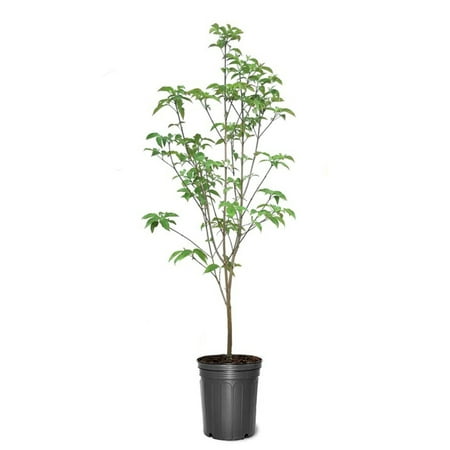Best shrubs for fall berries – 6 fruiting bushes to plant now for colorful borders and pots
Adding some of these fall-fruiting shrubs to your plot will not only look good but prove popular with wildlife too

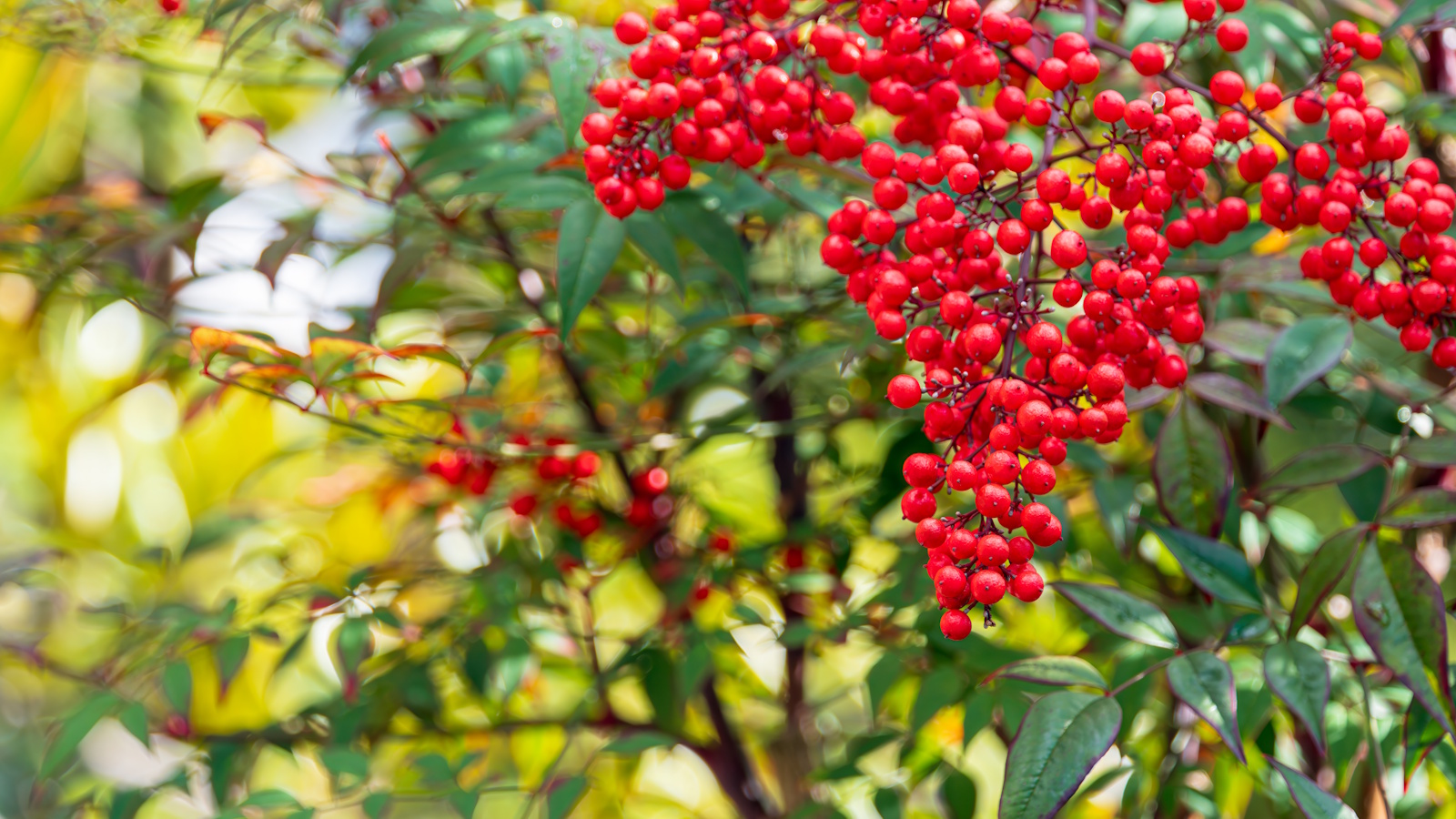
Fall is the perfect time to plant hedging, trees and shrubs. Despite shorter and cooler days, the soil remains warm and temperatures are often mild, providing ideal conditions for new plants to establish and settle into your yard before the onset of winter.
One way to enhance your yard during the colder months of the year is to plant some of the best shrubs for fall berries. Fruiting shrubs will prove to be vibrant additions to your containers and borders, but will also support local wildlife, providing food for birds and other mammals as they prepare for winter.
So, whether you’re looking for fall planter ideas to brighten up your terrace, or perhaps you are keen to attract songbirds to your plot, planting fall-fruiting shrubs like dogwoods or barberries will offer long-lasting color and interest. Our expert-approved list has some of the best options to consider planting this fall.
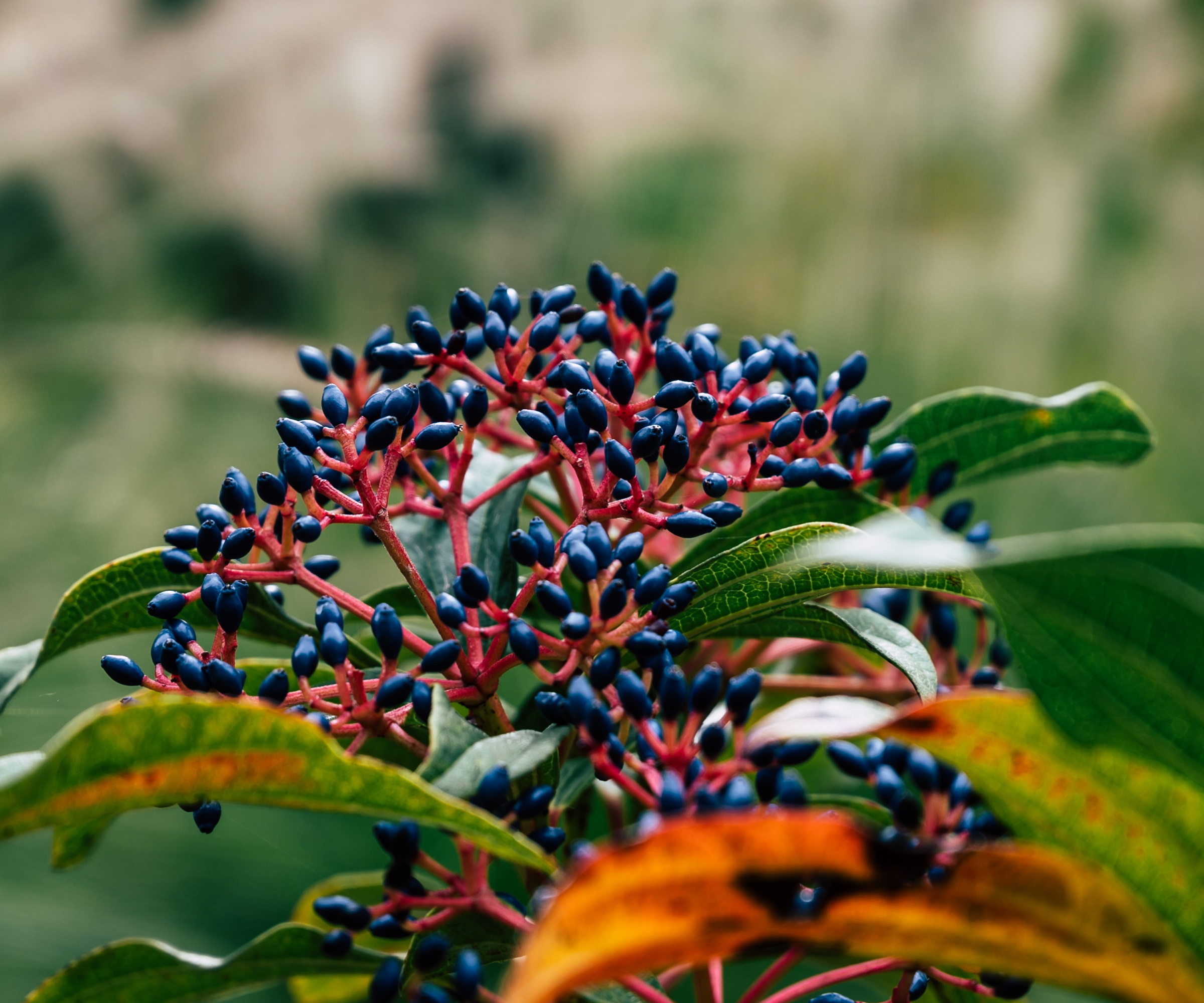
Best shrubs for fall berries
Consider planting one or more of these shrubs in the coming weeks as part of your fall gardening checklist. From crimson reds to blues and blacks, many fruiting shrubs can help to add a burst of color in fall and winter when much of the yard is dormant. While berries are useful for maintaining interest in the yard, snipping a few stems for a vase is also a great way to create seasonal, home-grown floral displays, adding a festive charm to your interior during Thanksgiving and Christmas.
1. Barberry
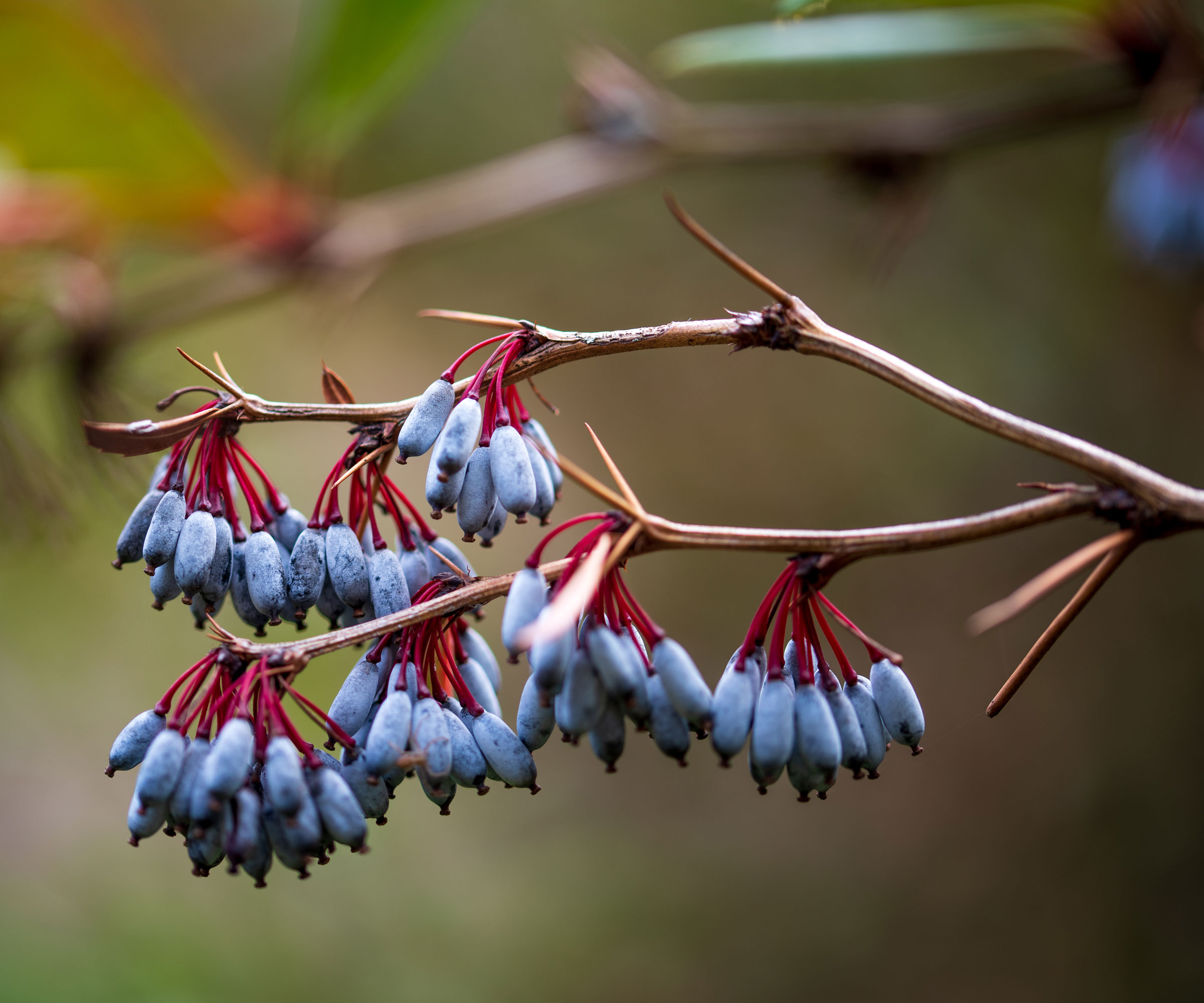
There are approximately 500 species belonging to the barberry, or Berberis, plant family, found growing across much of Europe, Asia and North America. All barberry shrubs produce interesting fruits in the fall, found in different shades of blue, black and red, typically in an elongated shape. If you are landscaping with shrubs and looking for hardy, resilient species, barberry plants might be worth considering.
One native option that produces crimson-red berries in fall is the American barberry, Berberis canadensis. Growing best in US hardiness zone 4 to US hardiness zone 8, this barberry, as with most varieties, prefers a sunny spot with moist but well-draining soil, with a neutral or slightly acidic pH.
Many barberry species - including the American barberry - sucker, readily sending up shoots from an expansive network of roots. For this reason, many species are considered invasive plants in some areas of the US, including the Japanese barberry. Always consult your local government office to ascertain what you can and cannot grow.
Design expertise in your inbox – from inspiring decorating ideas and beautiful celebrity homes to practical gardening advice and shopping round-ups.
Another native species that can be grown from zone 5 to zone 10 is Nevin's barberry, Berberis nevinii. 'Nevin's barberry is a rare species that is endemic to Southern California and is often considered an endangered species due to its small, isolated populations,' says Terry Huang, plant expert and Director of Living Collections at South Coast Botanic Garden in the Los Angeles area.
'Unlike its cousins in the horticultural trade, this barberry is covered in a profusion of yellow flowers in spring followed by an abundance of orange-red berries in summer and fall,' Terry adds. 'The bluish narrow leaves provide interest year round when not in flower or fruit.'
Barberry live starter plants are available to order online from Walmart.

Terry Huang is the Director of Living Collections at South Coast Botanic Garden in the Los Angeles area. He loves to share his passion for plants by finding creative ways to make botany and horticulture fun and accessible for all.
2. Dogwood

Native dogwoods are low-maintenance shrubs or trees that can be grown in different regions and climates across the United States. All dogwood species produce impactful flowers in spring before colorful berries emerge in late summer and fall, proving popular with hungry red cardinals, warblers and other songbirds.
One of the best options for bright fall berries is Cornus nuttallii, otherwise known as the Pacific dogwood, as seen in the image above. 'The Pacific dogwood is best suited to US hardiness zone 7 to zone 9,' says Dr Ross Bayton, Director at Heronswood Gardens in Washington.
'Pacific dogwoods will tolerate some shade though flower and berry production will be noticeably better when planted in an open position,' Ross adds. 'With red fruits and exceptional yellow foliage in fall, this low-maintenance shrub is a strong choice.'

London-born botanist and gardener Dr Ross Bayton gained his PhD at the Royal Botanic Gardens, Kew, studying the classification of tropical palms. He’s the author of several books on horticulture. He is now the director of the world-renowned Heronswood Garden in Kingston, Washington, and is developing a 5-acre garden at home in nearby Bremerton.
3. Chokeberry
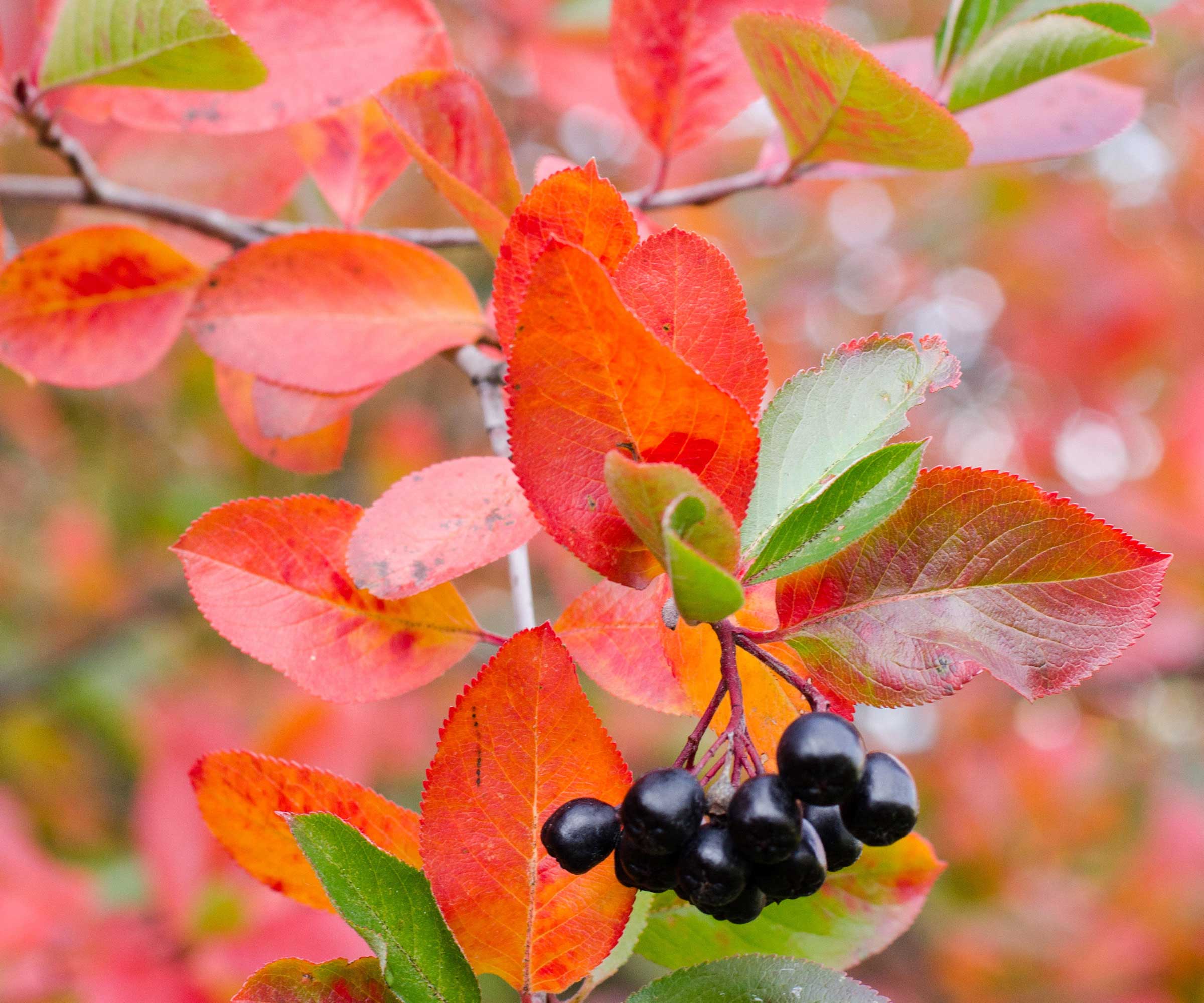
If you are looking for fall plants for privacy, another shrub to consider is the native chokeberry. Found growing along riverbanks, marshes and woodlands across North America, chokeberry shrubs, or Aronia arbutifolia, look particularly impressive during fall, with fiery red foliage and dark berries, as seen in the image here.
Chokeberry bushes can be grown from US hardiness zone 4 to zone 9, and are ideal shrubs to plant if you are seeking wildlife garden ideas. Reaching up to 10 feet tall, chokeberry flowers provide nectar for bees and butterflies, while the berries are popular with robins, woodpeckers, jays and bluebirds.
These tough and resilient shrubs do best in either full sun or partial shade and can be planted during the fall months. Chokeberry live starter plants are available to buy from Walmart.
4. Heavenly bamboo

For an evergreen option that holds on to attractive colored foliage during the fall and winter, consider adding heavenly bamboo, or Nandina domestica, to your yard. As can be seen here, heavenly bamboo plants can have red-tinted foliage in summer and bright red berries from September onwards, notable as one of the best shrubs with winter berries.
Despite its name, heavenly bamboo is not actually a bamboo but a species of small shrub that is native to Asia. When working as a gardener in London, I grew heavenly bamboo in many urban gardens. With a moderate growth rate and few pest or disease-related problems, heavenly bamboo is a low-maintenance option that more than earns its place in any yard.
In terms of growing conditions, heavenly bamboo does best in US hardiness zone 6 to zone 9, thriving in bright, open situations that enjoy plenty of sunshine. Once established, this shrub is drought-tolerant and would not require supplemental watering.
Small nandina plants are available from Amazon.
5. Dog rose
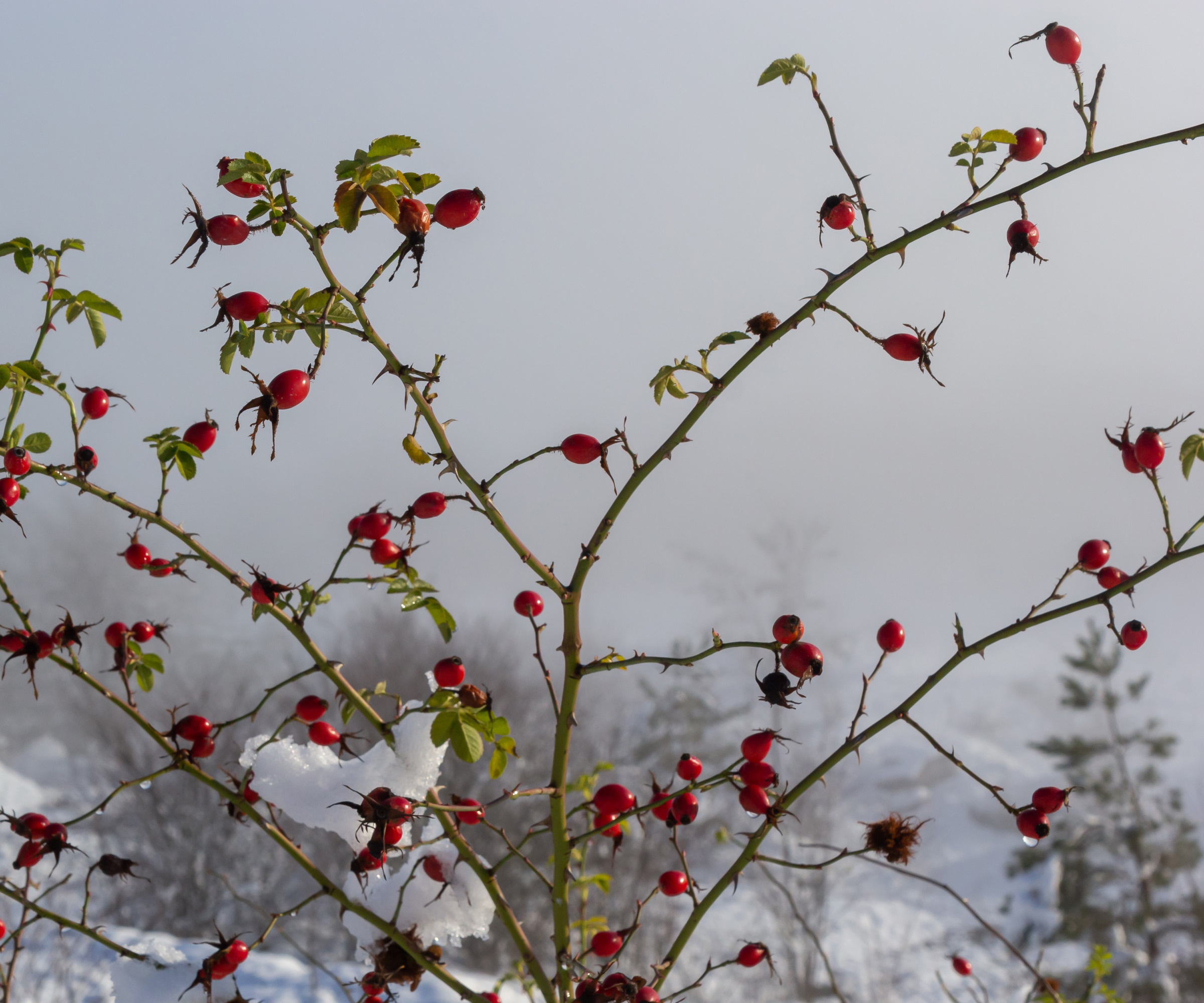
Rosa canina, commonly known as the dog rose, has singular, open flowers with five petals, making this an ideal plant for pollinators during spring and summer. It is in fall, however, when dog roses come into their own, with masses of rose hips taking on a rich red color. The trick is to stop deadheading your rose from mid-summer, ensuring that there are plenty of hips to maintain interest through fall and winter.
When considering how to grow dog roses, these plants are hardy down to zone 5, tolerating cold winters and hot summers. For the best results, position in a sunny border with a little space around your rose, as they do tend to grow through other nearby shrubs and perennials.
If you are interested in growing native planting, why not try the California rose, Rosa californica, famed for producing beautiful pink blooms in summer and red rose hips in the fall.
'The California rose is quite tough and forgiving,' says Terry. 'As California native planting, it grows wild throughout the state in a range of conditions. Fragrant flowers develop into bright red hips in the fall, maintaining impact in any yard. For best flower and fruit production, plant this shrub in full sun and provide supplemental water during the warmer months of the year.'
Wild dog rose seeds are available to order from Walmart.
6. Tupelo

Nyssa sylvatica, commonly known as tupelo or black gum, is a native shrub or tree growing across North America, found in Texas, Florida, New York and Canada. If you are looking for unusual statement trees for your garden border or perhaps for a pot, tupelo is another option with superb fall interest.
Fully hardy, this species can be grown from US hardiness zone 3 upwards, with a preference for full sun and moist soil. While this species can grow up to 80 feet in the wild, it has a very slow growth rate and can be pruned annually to maintain a small shrub-like form. Alternatively, plant tupelo in a pot to restrict its growth.
Try growing the 'Wildfire' variety, which has crimson-pink leaves in fall as well as dark blue-black berries that are a favored snack of songbirds, making this one of the best trees for wildlife.
Black tupelo live starter trees are available from Amazon.
FAQs
What fall-fruiting shrub would you recommend for a pot in a small yard?
If you want to plant a fall-fruiting shrub in a container, I suggest growing an evergreen species that produces berries in summer and fall, such as heavenly bamboo. While this is not a native species, it will maintain greenery all year long, with white flowers in summer and red berries in the fall. While native deciduous options are impactful too, maximizing interest across all seasons is important when growing in pots. What's more, the berries are a vibrant red, looking particularly good when used in vase displays indoors around Christmas. Alternatively, try growing Viburnum davidii, which has evergreen foliage and bright orange berries in the fall.
Whatever species you opt to grow, fall is considered an ideal time to plant shrubs and trees. This is because temperatures are preferable for plants at this time of year as opposed to summer or winter. In addition, plants are entering their dormant phase, so don't need as much water, although providing a deep watering after planting is a good idea.
For more tree inspiration, see our guide on native alternatives to Japanese maples, with several options that have colorful and dramatic fall foliage and berry displays.

Thomas is a Content Editor within the Gardens Team at Homes and Gardens. He has worked as a professional gardener for both public spaces and private estates, specializing in productive gardening, growing food and flowers. Trained in Horticulture at the Garden Museum, he has written on gardening and garden history for various publications, including The English Garden, Gardens Illustrated, Hortus, The London Gardener and Bloom. He has co-authored a Lonely Planet travel book, The Tree Atlas, due out in 2024.
